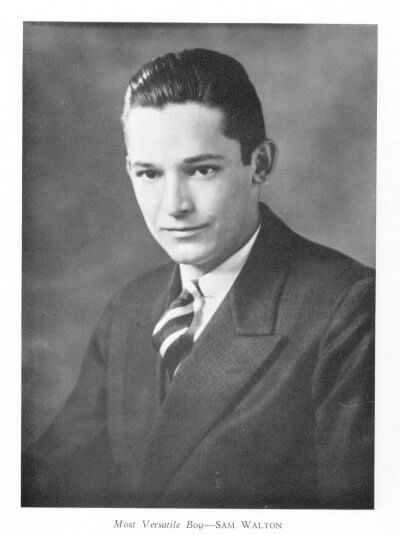
He single-handedly changed the face of retail shopping in the United States. He came through failure and heartbreak and persevered to build the most successful one-stop shopping enterprise in the nation. He is Sam Walton and it would be extremely difficult to find a man, woman, or child in the United States and around the world who has never shopped at one of his Wal-Mart or Sam’s Club locations.
Most people have heard the almost cliché American success story by now. All-American athlete and scholar returns from military service to open a variety store at the end of WWII. He then grows the business into several more stores around the region, then across then country, and eventually around the globe.
But why did he succeed where so many others failed? What enabled him to turn Walton’s into the largest family business in the world? The secret to his success is rooted in his failure.
The Early Days
In 1945, at the tender age of 26, Sam Walton purchased a Ben Franklin variety store in Newport, Arkansas which was part of the Butler Brothers’ chain of stores. This particular location hadn’t done particularly well in the past, and with a new owner who had no retail experience to his name, there likely wasn’t much reason for optimism. But despite the long odds, Sam Walton’s dogged determination and common sense business approach started to yield results. Within three years, Walton was able to grow sales nearly three-fold from $80,000 to $225,000.
His success would prove to be his undoing with the Butler Brothers. Walton had signed a lease that gave the Butler Brothers 5% of sales, but as they began to see how successful he had become in growing the store they refused to extend his lease. Why settle for 5% when they could leverage him out and earn 100%? In the end they agreed to buy the store and all its inventory for $50,000 which Walton agreed was a fair price. But when he left, he took with him the valuable lessons on how to succeed in the retail business.
Lessons Learned, Lessons Applied
One of Walton’s earliest strategies for success was to study intently what his competitors were doing. In Newport, his main competition came from John Dunham’s Sterling Store just across the street. Walton personally visit that store constantly learning from how he displayed his items, how he set his prices, and examined the things that were working and things that weren’t. Walton’s wife Helen would later attribute this tenacity in collecting information from his competition as one of the biggest factors to his success. In his book Giants of Enterprise: Seven Business Innovators and the Empires They Built, author and professor Richard S. Tedlow quotes Helen as saying:
“Of course, what really drove Sam was that competition across the street — John Dunham over at the Sterling Store. Sam was always over there checking on John. Always. Looking at his prices, looking at his displays, looking at what was going on… I’m sure it aggravated him quite a bit early on.”
Another significant lesson he took from that first experience with the Ben Franklin store became the bedrock of the Wal-Mart enterprise: always give your customers low, low prices.
Tedlow goes on to explain, “Having found less expensive suppliers than Butler Brothers, he did not sell his products at prevailing prices. Instead, he discounted his merchandise, passing the savings he achieved on to the consumer, and made his profit on volume rather than on margin… Once seizing on it, never wavering from it became the centerpiece of Wal-Mart’s greatness.”
From Walton’s to Walmart
In a 2004 interview with Fortune Magazine, former Wal-Mart CEO David Glass echoed the lessons of Sam Walton on constantly evaluating both one’s own stores and those of their competitors by explaining, “We had a research group in which six of the regional discount chains would come together. One of the first meetings I attended was in October 1976 in Arkansas. You had all the senior officers, and they’d go out to your stores and critique them. There were a few of us who spent more time in our competitors’ stores than they did — looking at what they were doing, copying, and trying to improve on everything we copied.”
Glass went on to say that K-Mart’s downfall resulted from being too comfortable in their position as industry leaders in the 1970’s. Unlike with Wal-Mart, they refused to look at changing and evolving.
As for the early lesson of keeping prices low, Wal-Mart’s slogan of “Everyday low prices” became the centerpiece of their advertising strategy in the 21st century.
There are other lessons Sam Walton picked up along the way, such as the importance of making managers and employees feel like they are part of the team, but the roots of his success can ultimately be traced to that single store in Newport, Arkansas in the late 1940’s.









